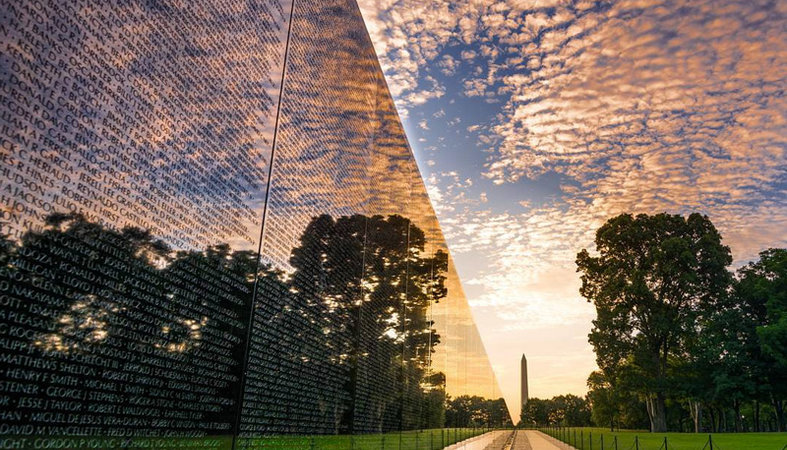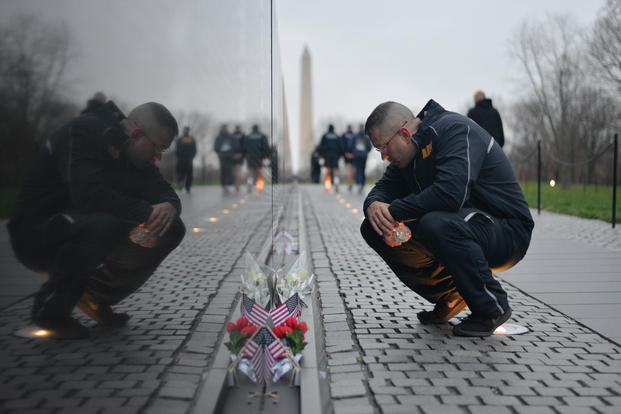Vietnam Veteran Memorial: Does it heal a nation?
Memorials serve as a means to portray and remember the past; they capture American history and function to preserve and shape national identity or what might be deemed the American creed. The question is, what do memorials of controversial events try to convey? How do we commemorate a past that we do not want to remember? Specifically, the Vietnam Veteran Memorial exemplifies this tension. As Winston Churchill once put, “History is written by the victors,” memorials are often dedicated to victories. Despite being the most-visited war memorial in the United States, it is a memorial for a war that the U.S. lost. Even though time has passed, initial hostility has faded, and the Vietnam War Veteran memorial are built to commemorate sacrificed soldiers, a work of art cannot heal a nation but can only obscure the pain and suffering of their families.
The History of the Vietnam War

The Vietnam War was a long, costly and divisive conflict that pitted the communist government of North Vietnam against South Vietnam and its principal ally, the United States.
More than 3 million people (including over 58,000 Americans) were killed in the Vietnam War, and more than half of the dead were Vietnamese civilians. Vietnam Veterans represent the largest cohort of American Veterans in terms of service era. While the majority of Vietnam Veterans successfully readjusted to postwar life, a substantial minority of Vietnam-era Veterans have suffered from a variety of psychological problems, and have experienced a wide range of life-adjustment problems.
The Vietnam War differed from other wars because it was politically controversial and morally questionable and resulted in defeat; it resembled other wars because it called out in participants the traditional virtues of courage, self-sacrifice, and honor
The Vietnam War was a long, costly and divisive conflict that pitted the communist government of North Vietnam against South Vietnam and its principal ally, the United States.
More than 3 million people (including over 58,000 Americans) were killed in the Vietnam War, and more than half of the dead were Vietnamese civilians. Vietnam Veterans represent the largest cohort of American Veterans in terms of service era. While the majority of Vietnam Veterans successfully readjusted to postwar life, a substantial minority of Vietnam-era Veterans have suffered from a variety of psychological problems, and have experienced a wide range of life-adjustment problems.
The Vietnam War differed from other wars because it was politically controversial and morally questionable and resulted in defeat; it resembled other wars because it called out in participants the traditional virtues of courage, self-sacrifice, and honor. Many Americans opposed the war on moral grounds, appalled by the devastation and violence of the war. Others claimed the conflict was a war against Vietnamese independence or an intervention in a foreign civil war; others opposed it because they felt it lacked clear objectives and appeared to be unwinnable.
Vietnam Veteran Memorial: The Construction

On November 11, 1982, seven years after the last American died in Vietnam, the Vietnam Veterans Memorial was dedicated.
A Vietnam veteran – Jan Scruggs initiated a hard-fought battle to build a Vietnam War Memorial, finally convincing Congress to appropriate land for a memorial that would be built with public funds. The location secured, the seemingly uncontroversial process of articulating goals for a memorial and staging a competition draws over 1100 entries – then the largest such design competition in the United States – and the winner is Maya Lin's "Wall."
The Vietnam Veterans Memorial is a 2-acre (8,093.71 m²) U.S. national memorial in Washington D.C. The memorial consists of three parts: the Vietnam Veterans Memorial Wall, completed first and the best-known part of the memorial; The Three Soldiers; and the Vietnam Women's Memorial. The wall is Inscribed on the black granite walls with the names of more than 58,000 men and women who gave their lives or remain missing.
Impact

The Vietnam Veterans Memorial construction grew out of a delayed realization that some public symbol was needed to recognize the men and women who died in the Vietnam War. But its creators faced a task for which American history furnished no precedent: the task of commemorating a divisive defeat.
Obviously, no one can turn back time to be able to save thousands of lives of veterans. All the pains and sufferings were too severe to be healed by material means, and the only possible way is to be soothed by generic emotional means. The wall is not meant to heal the physical pain of the veterans, but to honor the sacrifices of the dead, calm the injured, and thus indirectly comfort their families. In fact, in 2010, a study found that visiting the wall multiple times can help Vietnam veterans better cope with post-traumatic stress. Therefore, though indirectly, the memorial plays a key role in the recovery of the veterans and their families.
However, the core reason underneath the sufferings of veterans can never be entirely resolved. As Scruggs put it himself, “The wounds caused by the war still require a political healing, a healing on many different levels. Veterans may get solace from the memorial, but they need real programs to help them—programs for job counseling, psychological counseling, aid for homeless vets. There are many problems that haven’t been resolved. There’s still much work to do.”
References
“Public Memorials in American Life.” American Studies Today, http://www.americansc.org.uk/Online/Public_Memorials.htm. Accessed 2 Mar. 2011.
“VA Research on Vietnam Veterans.” U.S. Department of Veterans Affairs, https://www.research.va.gov/topics/vietnam.cfm.
Watkins, Nicholas, et al. “The War Memorial as Healing Environment: The Psychological Effect of the Vietnam Veterans Memorial on Vietnam War Combat Veterans’ Posttraumatic Stress Disorder Symptoms.” Environment and Behavior, vol. 42, no. 3, May 2010, pp. 351–375, doi:10.1177/0013916510361873.
